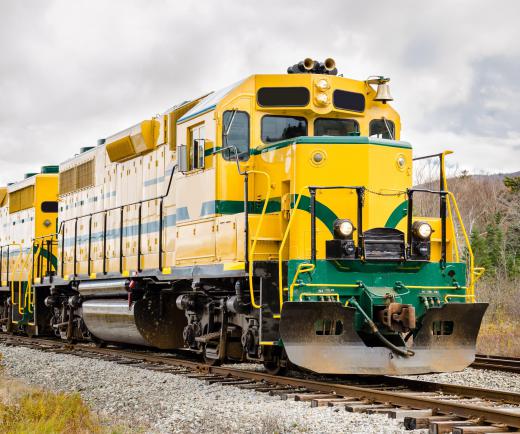A turbo generator is a mechanical device that is used to produce electrical power. It does so by turning a large turbine that is connected to a generator, which converts mechanical energy to electrical energy. Turbo generators are created in many different shapes and sizes to meet the needs of many residential and industrial needs. They can also be configured to run off of electricity, steam, and several different bio fuels, each with distinct advantages and weaknesses.
Turbo generator machines powered by steam generate most of the world's power. A furnace is used for most conventional turbo generators and it heats water under high pressure so that it turns into steam vapor. Since there is only one exit point within the device, the vapor exits at a high velocity and drives a turbine to produce electricity. Higher turbine revolutions can be created by increasing the overall temperature within the furnace, and some turbo generators hold two different heat sources to create an effect known as superheating. Another popular example of steam-powered turbo generators is a locomotive engine or a turbocharger within a vehicle, both of which work almost exactly as the above example.

The same type of principle is present within nuclear reactors. Instead of a coal or wood fire, the heat produced from the nuclear material is contained within the reactor’s core. Thousands of pipes containing water are run throughout the large turbo generator, so there is constantly a heating and cooling process in motion, maximizing the potential power generated from the turbine. Since the water is exposed to radioactive materials from repeated exposure to the core, the sheer number of piping is essential to ensure safety within the plant.

Often, smaller turbo generators are created to function as an auxiliary power source within a larger structure, and they can be configured to function off of diesel, gasoline, or electricity. A prime example can be found on modern commercial aircraft; the turbo generator produces electricity to power many of the electrical components found within the vessel. If the primary power source was to fail, the turbine within the aircraft can generate enough power to keep all of the essential equipment functioning as long as the airplane is in motion. Many industrial manufacturing plants implement a similar technology to offset some or all of their overall power usage from the area power grid. Wind turbines are also an example of a small turbo generator, utilizing the power of the wind instead of steam to create energy.
